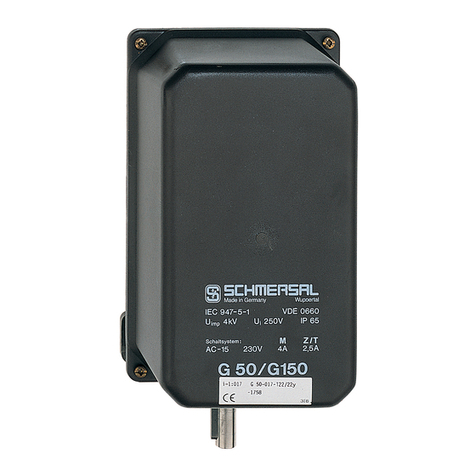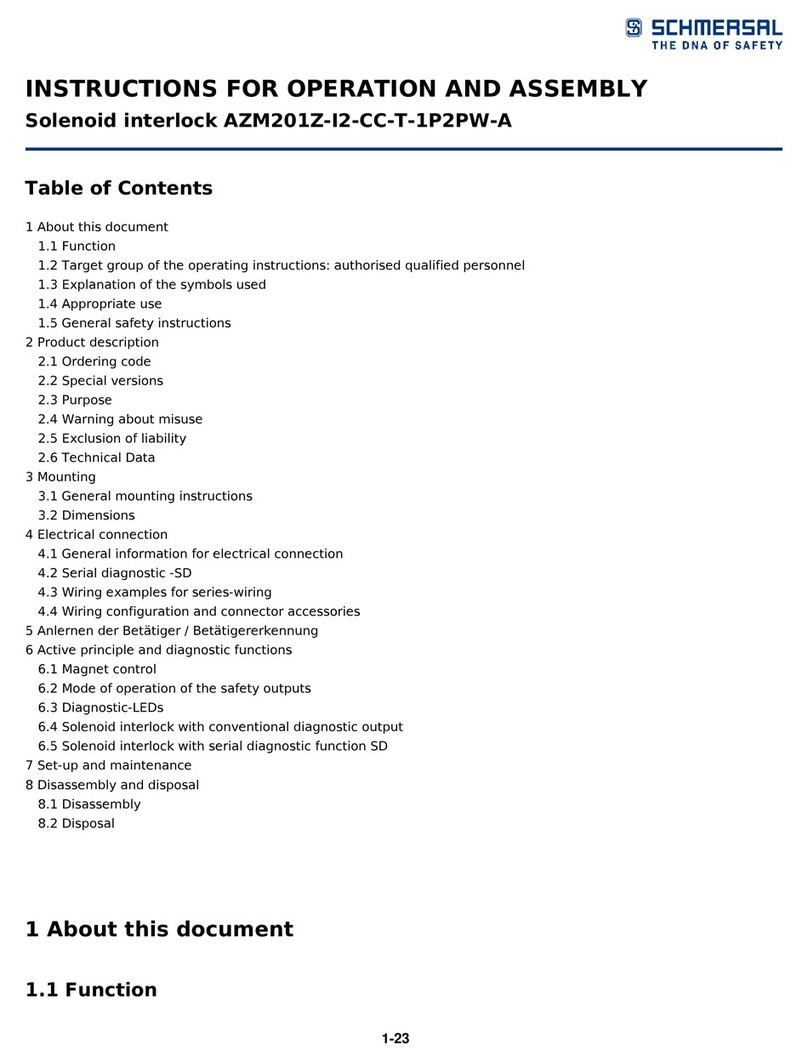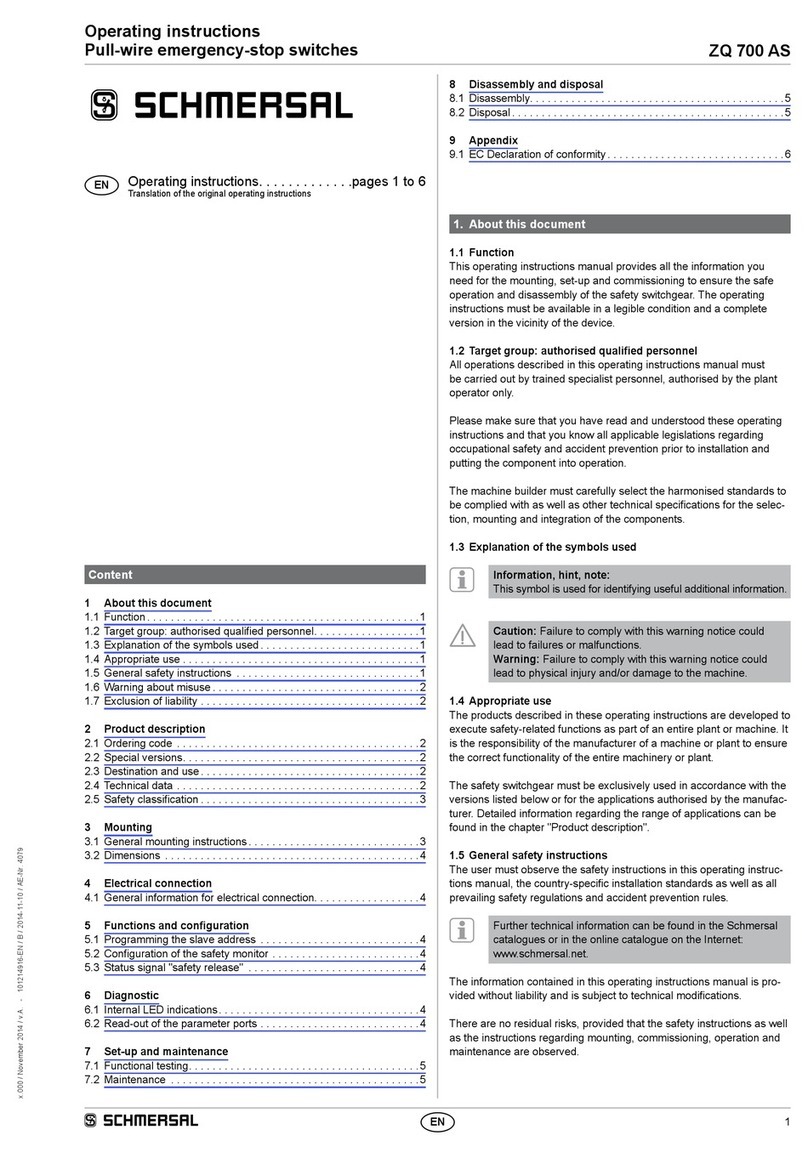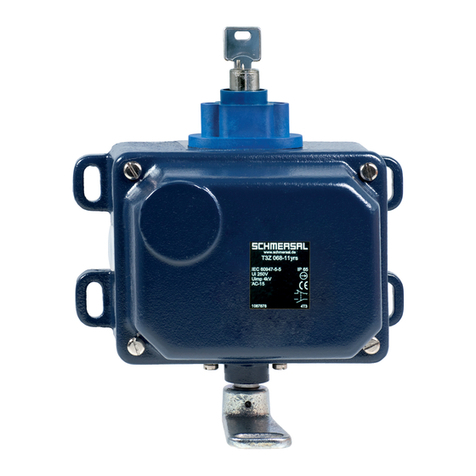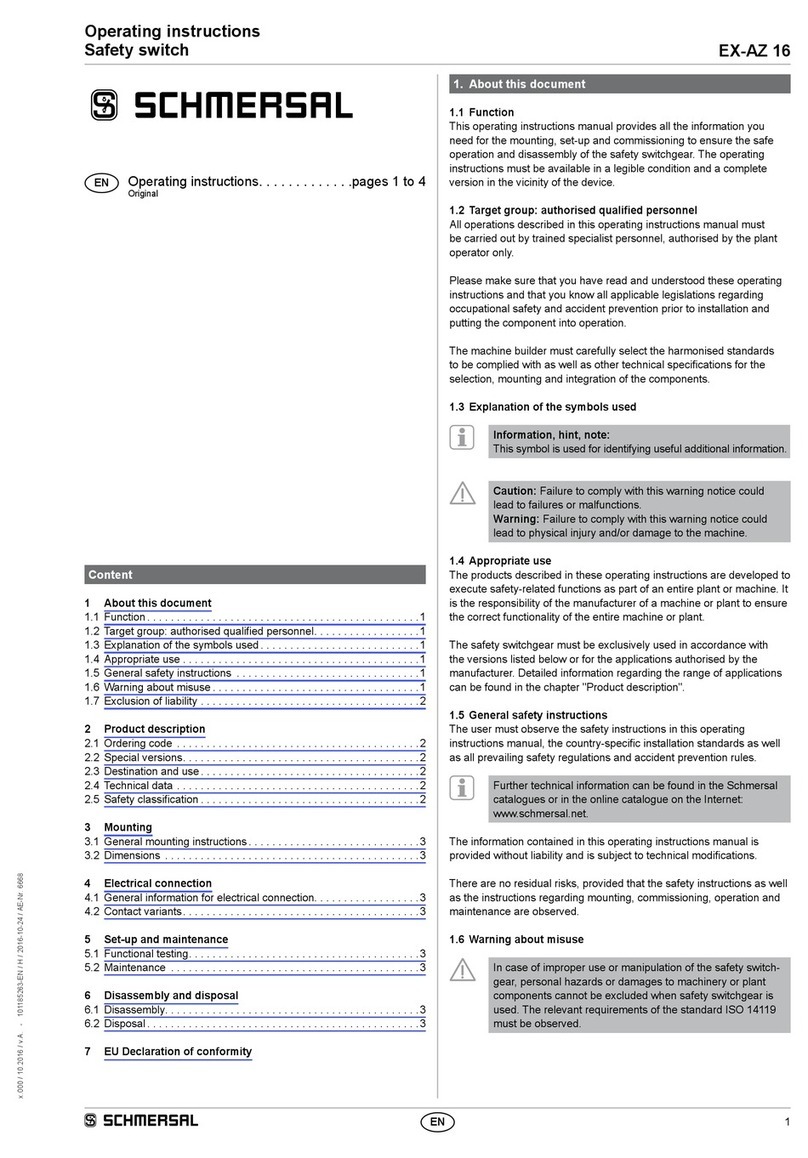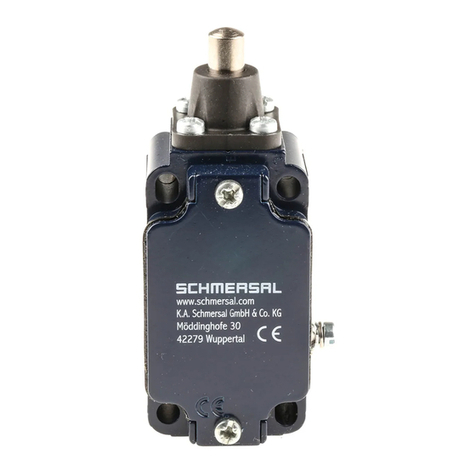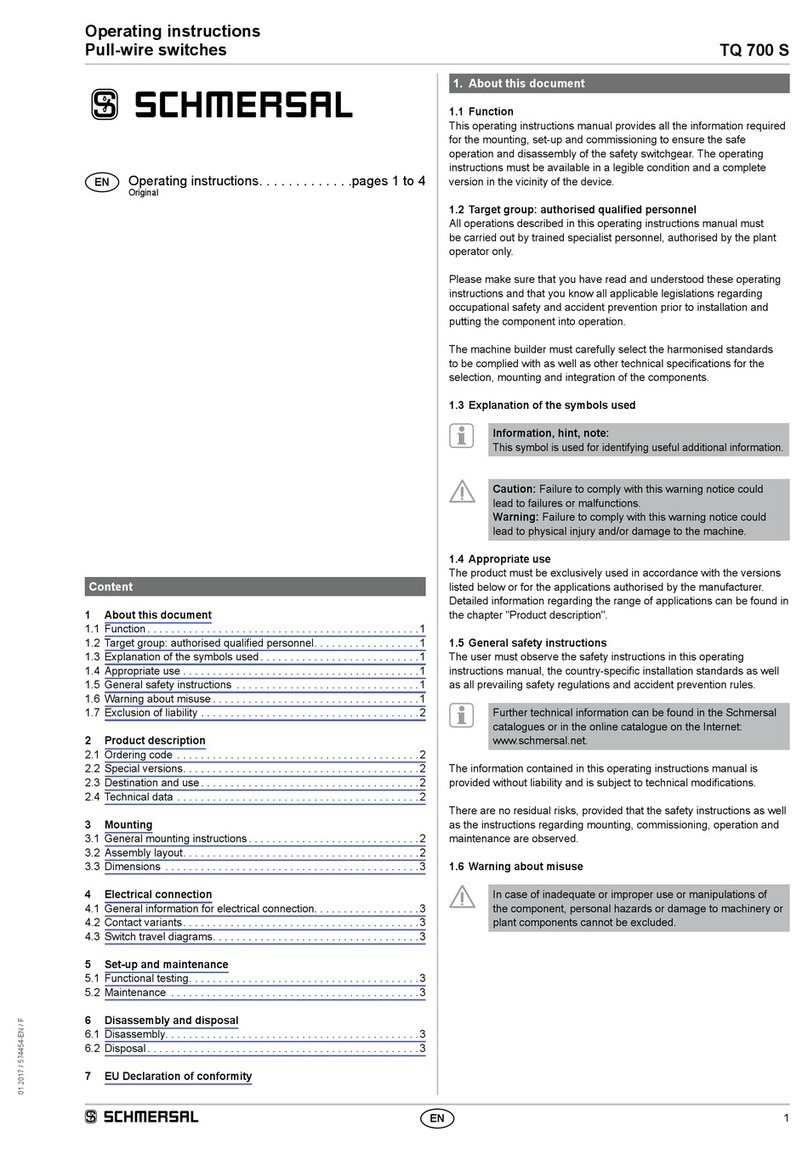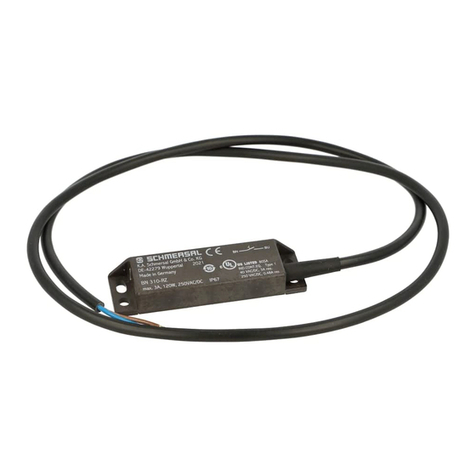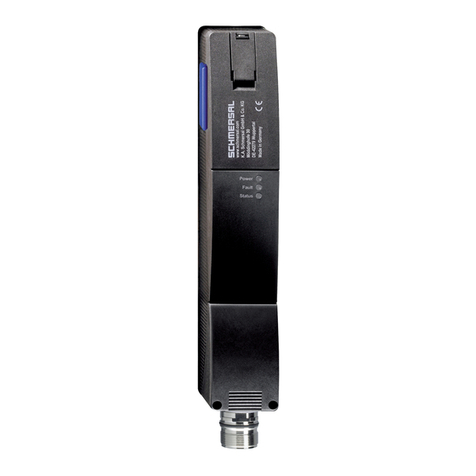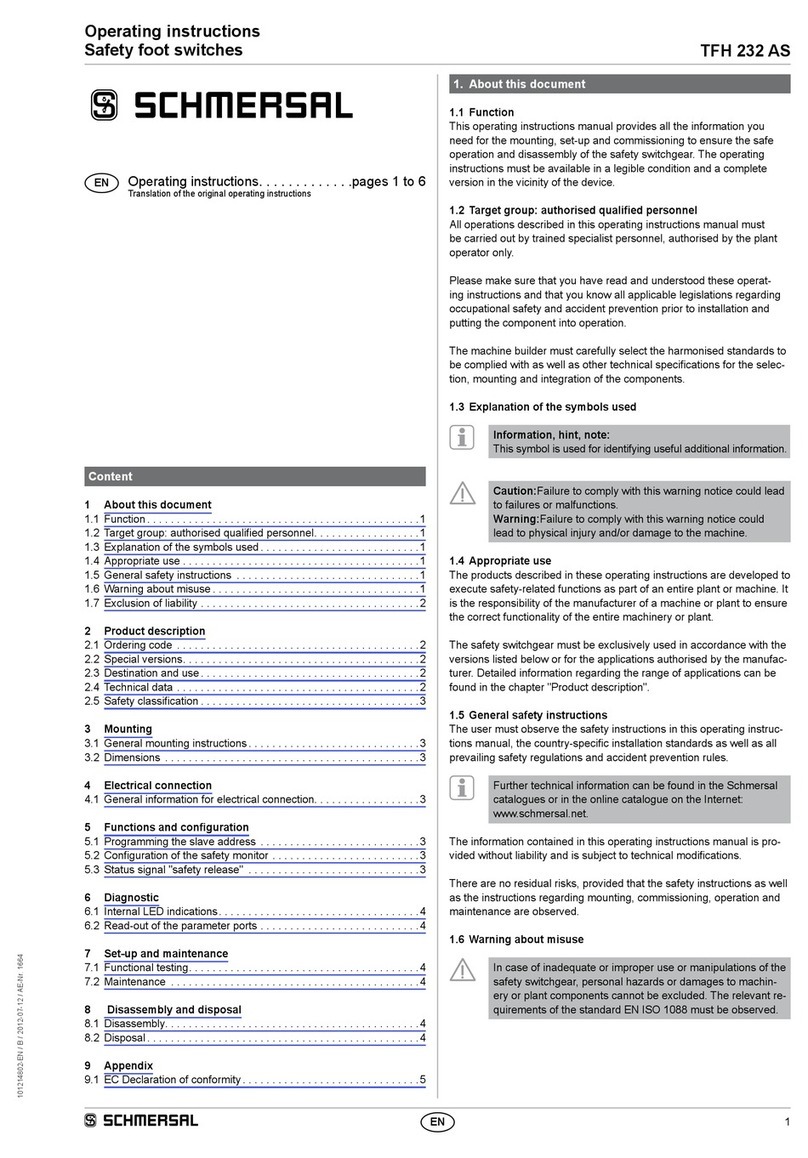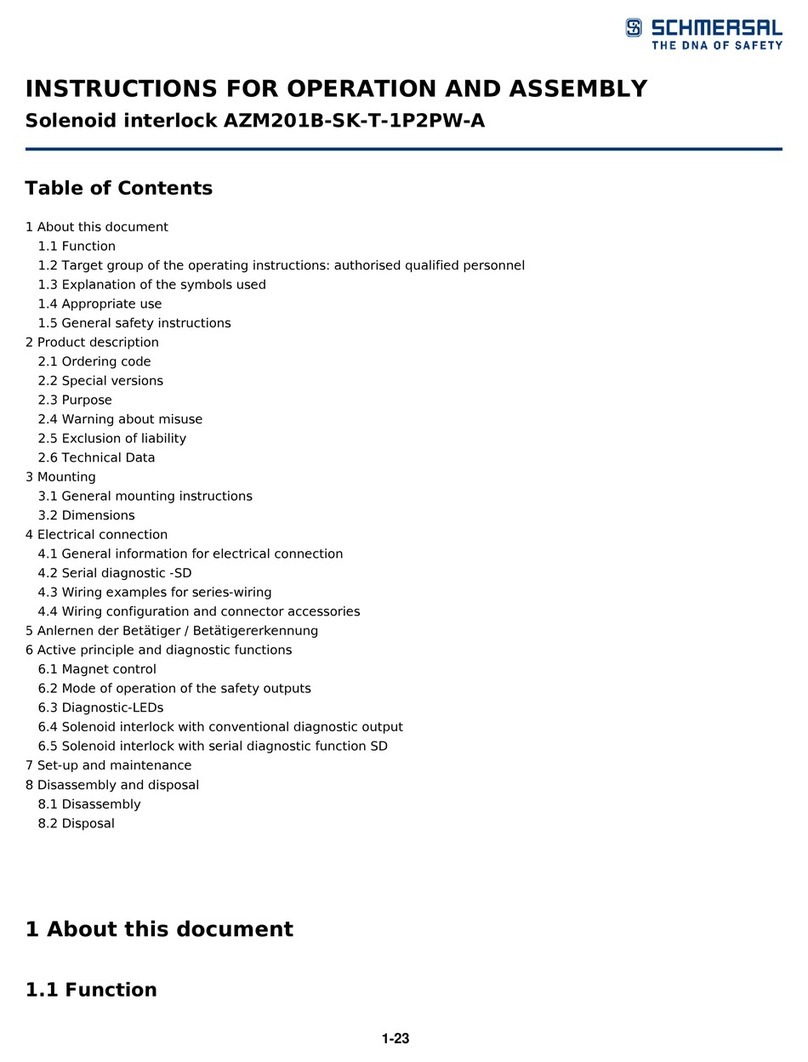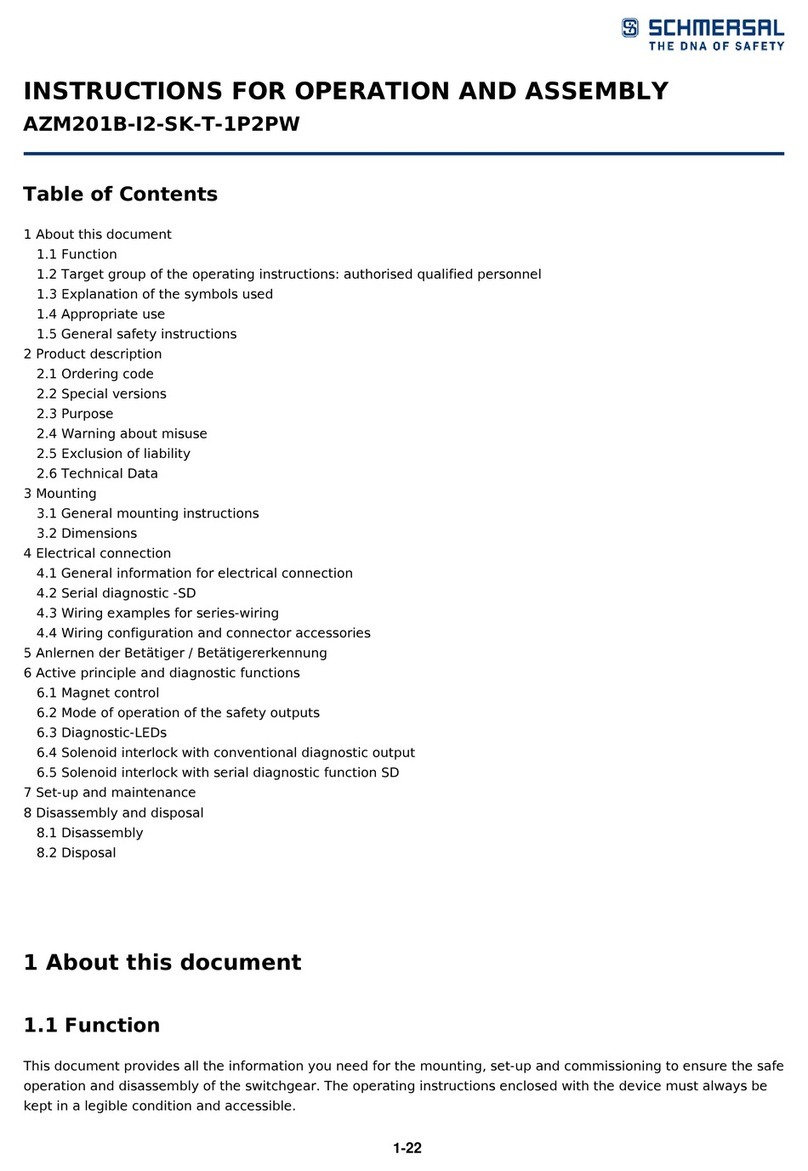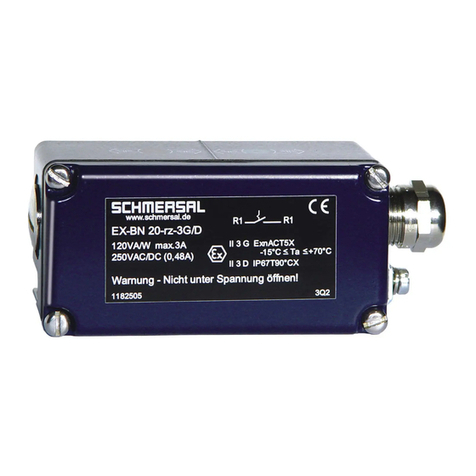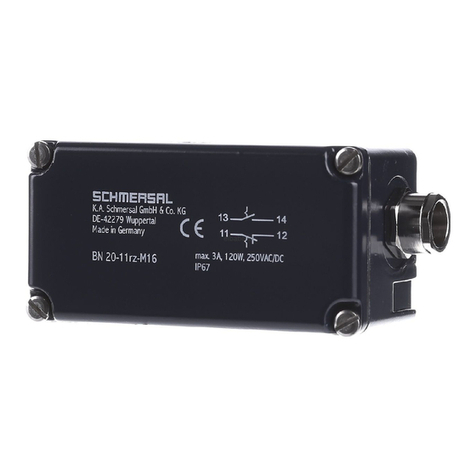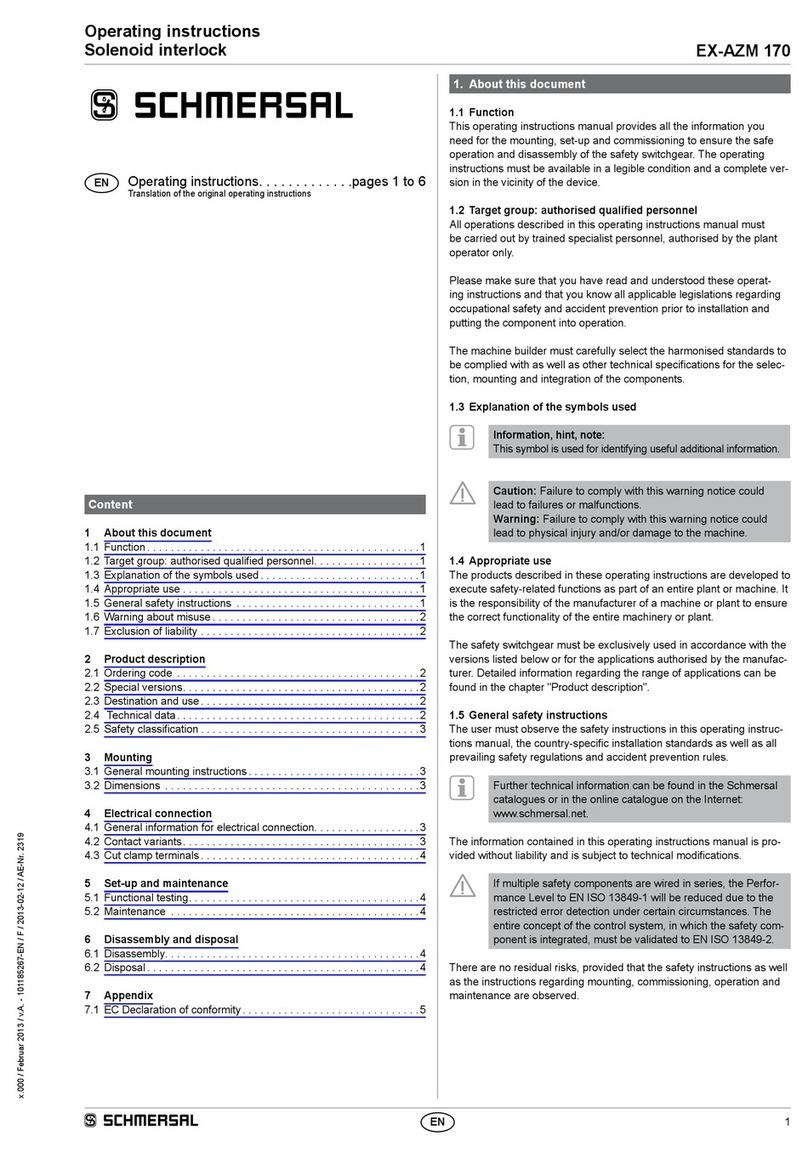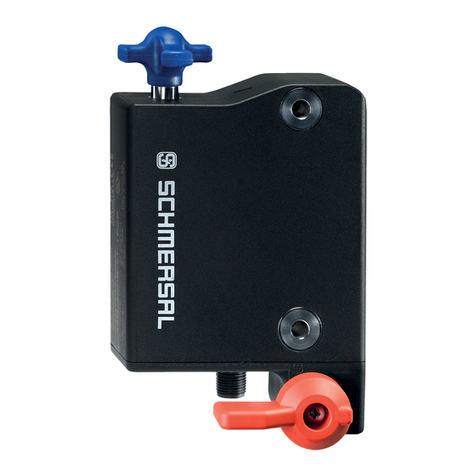
2
Operating instructions
Safety switch AZ 17 I
EN
1.7 Exclusion of liability
We shall accept no liability for damages and malfunctions resulting from
defective mounting or failure to comply with this operating instructions
manual. The manufacturer shall accept no liability for damages result-
ing from the use of unauthorised spare parts or accessories.
For safety reasons, invasive work on the device as well as arbitrary re-
pairs, conversions and modifications to the device are strictly forbidden;
the manufacturer shall accept no liability for damages resulting from
such invasive work, arbitrary repairs, conversions and/or modifications
to the device.
2. Product description
2.1 Ordering code
This operating instructions manual applies to the following types:
AZ 17-
➀
Z
➁
I-
➂
-
➃
No. Option Description
➀
11 1 NO / 1 NC
02 2 NC
➁
Latching force max. 5 N
R Latching force 30 N
➂
M16 cable gland
ST M12 x 1 connector
➃
B1 Straight actuator B1 included
B5 Angled actuator B5 included
B6L Flexible actuator for
left-hand side door hinge B6L included
B6R Flexible actuator for
right-hand side door hinge B6L included
Only if the information described in this operating instructions
manual are realised correctly, the safety function and therefore
the compliance with the Machinery Directive is maintained.
2.2 Special versions
For special versions, which are not listed in the order code below 2.1,
these specifications apply accordingly, provided that they correspond to
the standard version.
2.3 Destination and use
Safety switches with separate actuators AZ 17 are suitable for move-
able safety guards, which need to be closed to ensure the necessary
operational security.
The safety switches are used for applications, in which the hazardous
situation is terminated without delay when the safety guard is opened.
When the safety guard is opened, the NC contacts are positively
opened and the NO contacts are closed.
The safety switchgear units are classified as type 2 inter-
locking devices in accordance with ISO 14119 and are rated
as highly coded.
The user must evaluate and design the safety chain in
accordance with the relevant standards and the required
safety level.
The entire concept of the control system, in which the safety
component is integrated, must be validated to the relevant
standards.
2.4 Technical data
Standards: IEC 60947-5-1; BG-GS-ET-15
Enclosure: glass-fibre reinforced thermo-
plastic, self-extinguishing
Actuator: stainless steel 1.4301
Coding level according to ISO 14119: high
Protection class: IP67 to IEC 60529
Contact material: Silver
Contact type: change-over with double break Zb,
or 2 NC contacts, galvanically
separated contact bridges
Switching system:
A
acc. IEC 60947-5-1 slow action,
NC contact with positive break
Connection: cut clamp terminals
or connector M12, 4-pole
Cable section: 0.75...1.0 mm², flexible
Rated impulse withstand voltage Uimp:4 kV
Rated insulation voltage Ui:250 V
Thermal test current Ithe:10 A
Utilisation category: AC-15
Rated operating current/voltage Ie/Ue:4 A / 230 VAC
Required short-circuit current: 1000 A
Max. fuse rating: 6 A gG D-fuse
Positive break travel: 11 mm
Positive break force: each NC contact 17 N
Ambient temperature: −30 °C … +80 °C
Mechanical life: > 1 million operations
Actuating speed: max. 2 m/s
Actuating frequency: max. 2000 operations/h
Latching force: 5 N
- Ordering suffix R: 30 N
2.5 Safety classification
Standards: ISO 13849-1
Envisaged structure:
- Basically: applicable up to Cat. 1 / PL c
- With 2-channel usage and
fault exclusion mechanism*: applicable up to Cat. 3 / PL d
with suitable logic unit
B10d NC contact: 2,000,000
B10d NO contact at 10% ohmic contact load: 1,000,000
Service life: 20 years
* If a fault exclusion to the 1-channel mechanics is authorised.
TF
d
10d op op
op
n
(Determined values can vary depending on the application-specific
parameters hop, dop and tcycle as well as the load.)
If multiple safety components are wired in series, the Performance
Level to ISO 13849-1 will be reduced due to the restricted error
detection under certain circumstances.
3. Mounting
3.1 General mounting instructions
The mounting position however must be chosen so that the ingress of
dirt and soiling in the used opening is avoided. Use the supplied base
plate for the fixing. The tightening torque of the fixing screws must not
exceed 150 Ncm. The enclosure must not be used as an end stop. Any
mounting position. The mounting position however must be chosen so
that the ingress of dirt and soiling in the used opening is avoided. The
unused opening must be sealed by means of slot sealing plugs.

